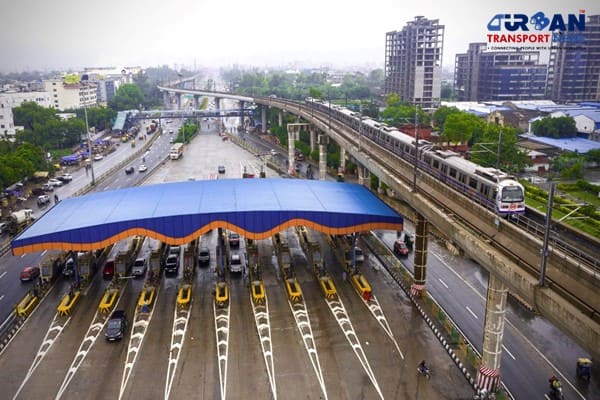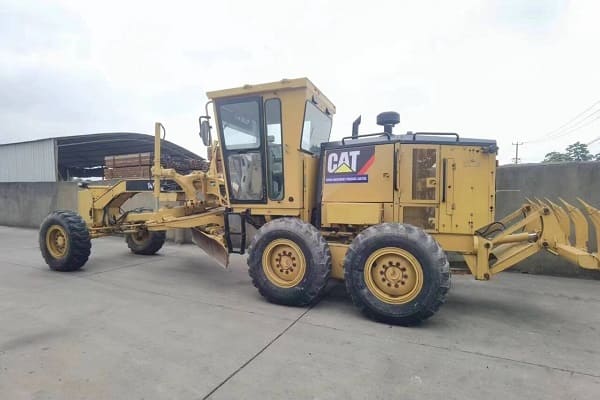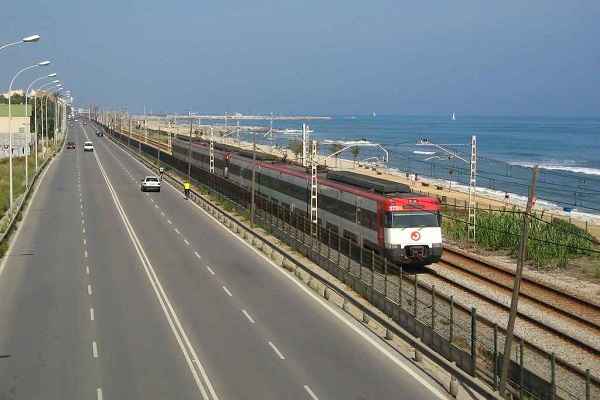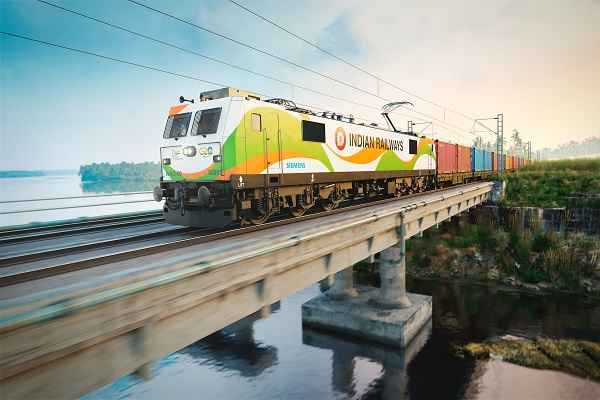 171 Years of Indian Railways: A History of Innovation and Progress
171 Years of Indian Railways: A History of Innovation and Progress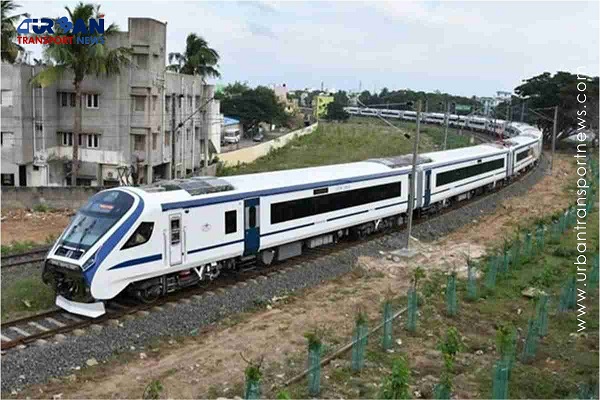 Vande Bharat Express trains carries over two crore passengers since their inception
Vande Bharat Express trains carries over two crore passengers since their inception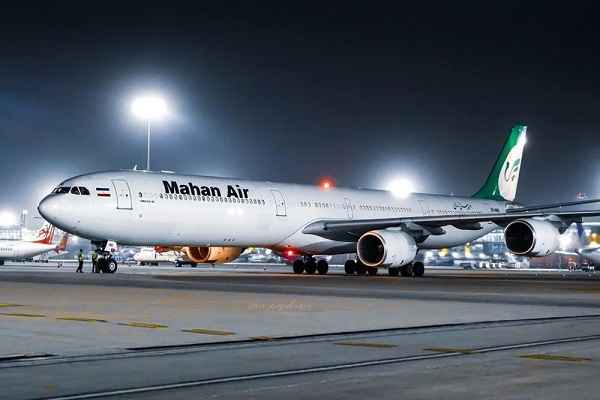 BPCL partners with Noida International Airport to construct ATF Pipeline
BPCL partners with Noida International Airport to construct ATF Pipeline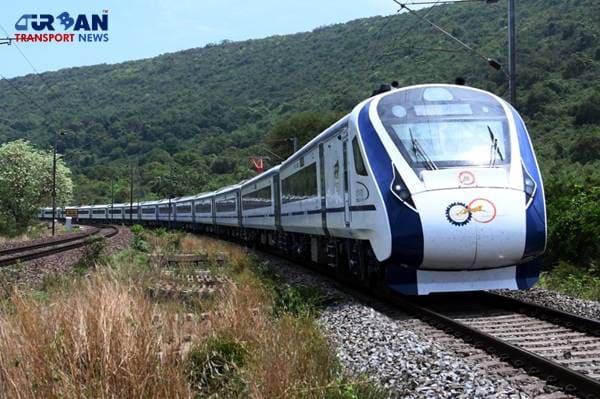 What are the Railway Development Plans in BJP's Manifesto for 2024-2029?
What are the Railway Development Plans in BJP's Manifesto for 2024-2029?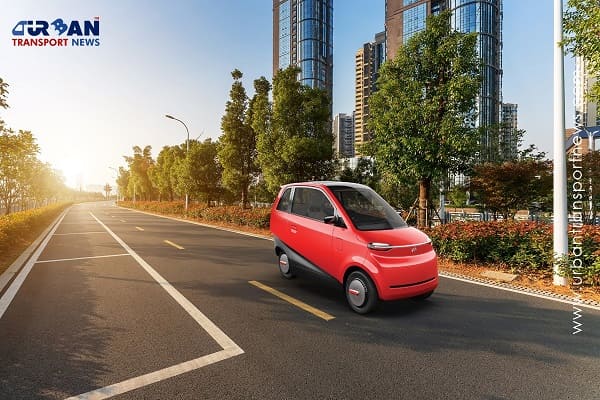 Latest innovations shaping the urban mobility sector across the globe
Latest innovations shaping the urban mobility sector across the globe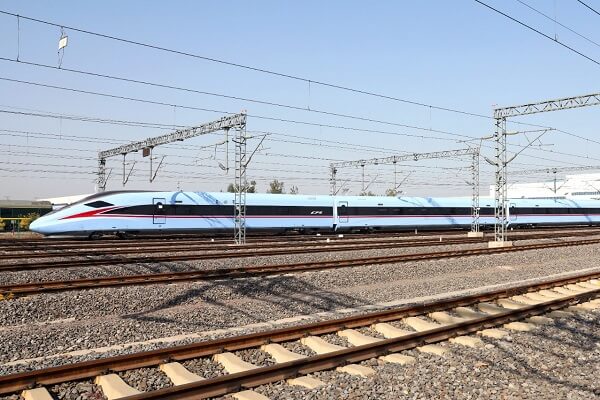 California issues RfP for procurement of High Speed Bullet Trains
California issues RfP for procurement of High Speed Bullet Trains ONCF floated global construction tenders for Kénitra - Marrakech High Speed Rail
ONCF floated global construction tenders for Kénitra - Marrakech High Speed Rail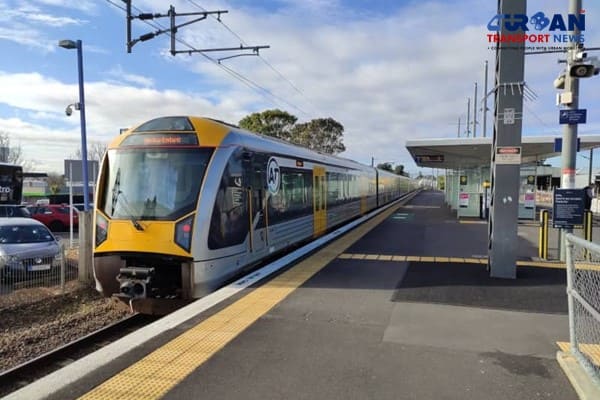 Six firms bags £4 Billion Train Control Systems contract from Network Rail
Six firms bags £4 Billion Train Control Systems contract from Network Rail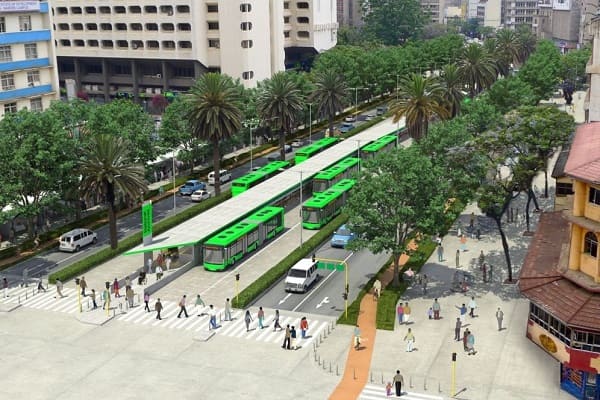 Electrifying Change: India's Path to Sustainable Urban Mobility
Electrifying Change: India's Path to Sustainable Urban Mobility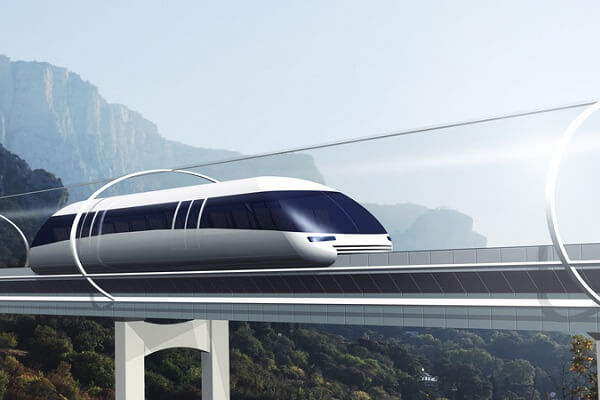 China's T-Flight Hyperloop Train Sets New Speed Record, Tested at 623 kph
China's T-Flight Hyperloop Train Sets New Speed Record, Tested at 623 kph
Exclusive Interview with Dr Navdeep Asija, Traffic Advisor to Govt of Punjab
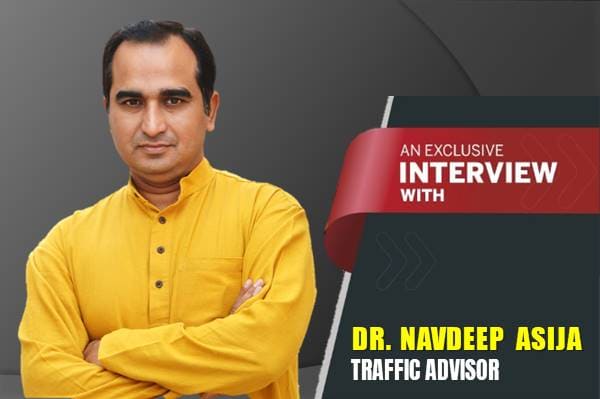
Dr. Navdeep Asija is presently working as Traffic Advisor to Government of Punjab and Director, Punjab Road Safety and Traffic Research Centre, at S.A.S. Nagar. Apart from this, he is a social activist and great thinker advocating car-free cities and rights of pedestrians and cyclists on the urban roads.
In a recent interaction with Urban Transport News, Dr. Asija talked on car free, non-motor transport and "Right to Walk" movement-led by him and recent win on a PIL filed by him in the interest of pedestrians and cyclists facing routine trouble on Indian roads. He also shared his thoughts on how can we make a city livable, accident free and people freindly with "Global Vision, Local Action".
Congratulations on a recent historical win on a PIL filed by you in the interest of pedestrians and cyclists facing routine trouble on Indian roads. Before going ahead, kindly share a brief about your professional journey.
Thank you and credit goes to the Team. To provide little background about me, I am a Civil Engineer working in the field of Sustainable Transport and Road Safety. I hold a doctorate in road safety and have over 25 years of professional experience in this field. I come from Fazilka, a small town near the India-Pakistan border in Punjab.
My journey began with the desire to do something for my hometown of Fazilka. In 2008, I started the ecocabs project, a dial-a-cycle rickshaw initiative that became a huge success. In 2010, we achieved another milestone by making the city centre a Car-Free Zone, which was the first of its kind in India. At present I am working as Traffic Advisor to Government of Punjab and Director, Punjab Road Safety and Traffic Research Centre, at S.A.S. Nagar.
The recent win is not just a personal victory but a win for all pedestrians and cyclists who face routine trouble on Indian roads. It is an achievement to have the government extend the right to walk to citizens, reducing the burden of traffic, promoting road safety, and preserving the environment. I am grateful to have been a part of this movement, and I hope that this win inspires similar actions across the country for the betterment of all.
What was the main objective of your PIL? How many years did it take to get a favourable order? What is the exact direction/order passed by the Courts in your favour?
The main objective of the PIL filed by me was to establish pedestrian and bicycle infrastructure as a non-negotiable right by linking it to the fourth generation of rights under Article 21 and to obtain statutory power and rules to improve and enforce this right. The fourth generation of subjective rights includes rights related to genetic engineering, rights of future generations, and rights that belong only to humanity as a whole. It took seven years to obtain favourable orders and bring everyone on the same page to extend these rights to the people.
The recent development regarding the "Right to Walk" movement in Punjab is the outcome of interim orders issued by the Honourable Punjab and Haryana High Court in response to petitions filed by myself and Mr. Balvinder Singh to advocate for the rights of pedestrians and cyclists in the Supreme Court of India. The State of Punjab has responded positively to both orders, taking action towards the cause and acknowledging it. The success of this movement is the result of a consensus among the public, executive, and judiciary on the issue of "Right to Walk," backed by strong political will.
Kindly highlight your car free, non-motor transport and "Right to Walk" movement and its impact on urban roads. Is the Govt. or concerned departments/authorities taking some decisions following the court orders?
This recent consent by the Punjab State on "Right to Walk" is an outcome of two ongoing PILs, both started as Suo moto actions. One of these actions was initiated by me related to the promotion of cyclist rickshaws, while the other was related to establishing a "Car Free Zone" in Fazilka. The Chief Justice of Punjab and Haryana High Court, Mr Mukul Moudgil, converted both these actions into Suo moto actions. In the same PIL I filed a miscellaneous application in the year 2016 to consider "Right to Walk" as part of a fundamental right under Article 21, and immediately the court ordered the States of Punjab, Haryana, and U.T. Chandigarh to comply with the desirable under Right to Walk, mainly focusing on the safety of pedestrians and cyclists who have been given inferior rights on the road compared to other road users.
The three pillars of democracy, the legislative, executive, and the judiciary, have actually come together along with citizens to make this possible. The bigger credit goes to the judiciary and the political will extended by State Political leadership to deliver. The pace of progress was slow, but the greater push came from the Supreme Court in the PIL filed by Mr Balwinder Singh Nagi of Ludhiana. By combining both, a state-level meeting chaired by the Chief Secretary was called, and as a traffic advisor to the state, I presented the blueprint. Immediately thereafter, considering the importance of this pressing issue, the state further issued executive orders affirming all such activities under the preview of the fundamental right. Now, each concerned department has been asked to make a blueprint for it, followed by mandating footpaths and cycle tracks along the roads, especially when they cross inhabited areas.
This is a 13-year-long journey, and particular to this it took 7 years, where I started as a citizen, then advised the government, and now I am on the delivery side. I think God has chosen me for it because it's rare for all such things to happen to one person, one after another.
Do you think that a similar movement is required for the rest of the country specially in growing urban areas/cities?
Yes, I strongly believe that a similar movement is required for the rest of the country, especially in growing urban areas/cities. The issues faced by pedestrians and cyclists are not limited to one city or region but are widespread across the country. With the rapid urbanization and increase in vehicular traffic, the safety and convenience of non-motorized modes of transport are being ignored.
Therefore, it is essential to raise awareness and mobilize citizens to demand better infrastructure and facilities for pedestrians and cyclists. The success of the PIL filed by me shows that people are ready for change and are willing to come together to demand their rights. It is crucial to replicate such movements in other cities and regions, bring together different stakeholders, and hold authorities accountable for their inaction.
By creating a mass movement, we can push for policy changes, investments in sustainable transportation infrastructure, and stricter enforcement of traffic rules. Such a movement will not only benefit pedestrians and cyclists but also promote public health, reduce pollution, and lead to more livable and sustainable cities.
What do you think about increasing traffic, vehicular loads on roads and raising road accidents in the country? Please highlight some possible causes of these burning issues on Indian roads and solutions thereof.
Increasing traffic, vehicular loads on roads, and road accidents are major issues that plague Indian cities, impacting both lives and the environment. The rise in pollution due to vehicular emissions is further deteriorating the quality of life in these cities. With an average of 4 hours daily spent commuting in big cities, individuals lose around 9 years of their travelling life in unproductive commuting alone, with a probability of meeting accident in a lifetime. These issues are largely due to poor transportation choices made in the past. The increased average trip length and absence of public transport have resulted in unplanned bigger cities and peri-urban areas, forcing everyone to buy personal vehicles.
To tackle these issues, there is a need to prioritize public transportation options and non-motorized modes of transportation such as cycling and walking. Compact cities and quality neighborhoods on a human scale should be designed to promote these modes of transportation. This can be achieved by investing in high-quality public transportation infrastructure such as dedicated bus lanes, improved last-mile connectivity, cyclable length of road network, and pedestrian-friendly walkways. Additionally, stricter enforcement of traffic rules and penalties for violations are necessary for better operations of this infrastructure. The future of Indian cities lies in adopting sustainable transportation systems that prioritize public health and environmental sustainability. It is unfortunate that we do not have any city with the vision for the future, and most solutions are addressing only present needs.
According to you, which city is the best example of car free, non-motor transport and pedestrian-friendly?
I think all small Indian towns are a good example of citizen-friendly infrastructure. If we exclude the big 60 cities, small towns with less than 1 lakh population have infrastructure that does not include flyovers or expressways. I consider such infrastructure to be a liability rather than an asset for the country. For instance, in Punjab, Haryana, and UT Chandigarh, 80% of urban pedestrian deaths occur in 20 large cities out of a total of 240 urban agglomerations. The problem lies with these big cities, which are automobile-centric. However, I believe that change has begun, and they are returning to a time when people used to walk and cycle in a cleaner environment.
What is Ecocabs? Kindly share some salient features of this concept and how is it beneficial for Indian cities?
Ecocabs is a transportation demand management initiative that bridges traditional rickshaws and real-time infrastructure like phones. Started in 2008, it made cycle rickshaws available by phone call. This reduced empty trips, increased ridership, and provided node-to-node connectivity using para-transit modes of transportation. The success of Ecocabs was significant, as at the time only 1% of rickshaw operators had access to phones. The initiative provided free mobiles and established call centers that were like tea shops, allowing common citizens to call cycle rickshaws on-demand. With the increased penetration of mobile phones, most rickshaw operators now have phones and the initiative is moving towards a self-sustaining model without much management required. Overall, Ecocabs is beneficial for Indian cities as it provides affordable and eco-friendly transportation options that are accessible and convenient for citizens.
What message would you like to deliver for Urban Planners, Planning Agencies and Govt. departments responsible for future city design & planning?
I would like to deliver the message of "Global Vision, Local Action" It is important for urban planners, planning agencies, and government departments responsible for future city design and planning to not only look at global models but also take into account the local context and needs. Documenting the Indian style of town planning and human scale transportation models can help in finding local solutions that bring people together and promote social and environmental harmony.
While metro may not be feasible at every location, it is important to consider alternative modes of transportation such as cycle rickshaws, e-rickshaws, and auto-rickshaws which are ubiquitous in Indian cities. Innovative models like the ecocabs, rapid rickshaw transit in Punjab can be studied and implemented in other cities as well. Planners should also focus on creating pedestrian-friendly streets, promoting non-motorized transport, and incorporating green infrastructure to make cities more liveable and sustainable. We must remember that the future of this planet lies in the past and in finding sustainable solutions that have worked in the past.
Anything else you would like to share with our readers.
India and Indian cities have the advantage of being in the developing stage. We can learn from the mistakes of developed cities and nations, and jump leagues ahead instead of following the rat race of automobile-centric infrastructure. By embracing innovative and sustainable solutions, we can create liveable and vibrant cities that prioritize the needs of people over cars. The future of this planet lies in the past, where walking, cycling, and public transportation were the norm. Let's not repeat the same mistakes and instead design cities that are healthy, equitable, and resilient.





